Day -11: R.I.P. to these Defunct Olympic Sports
Ready, set, motionlessly lie face-down in water 💫
In the early days of the Olympics, there seemed to be this kind of freewheeling vibe of “anything can count as a sport as long as at least five well-resourced white men are up for trying it.” Over time, the International Olympic Committee has developed exhaustive criteria for deciding which sports get to be part of the games, but their turn-of-the-century counterparts were more devil-may-care. In 1900 they had croquet, and then in 1904 they had roque, which is apparently just the American version of croquet, and then after that neither of these Olympic events were ever heard from again!
I don’t have much more to say about croquet or roque, except for the fact that I just realized “roque” is probably short for “croquet,” but I do want to tell you about a few other dearly departed early Olympic sports:
Obstacle Swimming (1900)

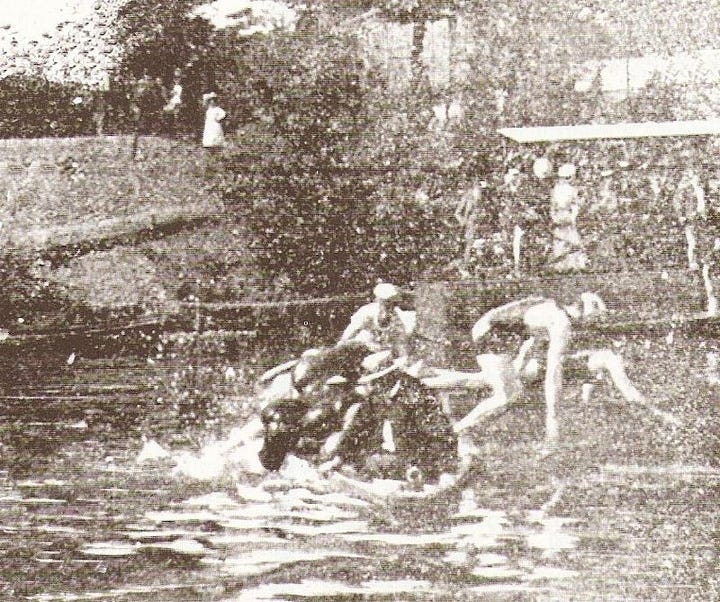
At the 1900 Olympics in Paris, a dozen dudes took to the Seine to speed through a 200 meter obstacle swimming gauntlet. Basically, you had to dive into the water, climb a pole, get off the pole, hoik yourself over one boat, then dive under another boat, and then call it a day. Some real heroes at Reuters put together this very handy diagram of the course:
The eagle-eyed folks at Topend Sports (whatever that is) have pointed out that Australian athlete Frederick Lane, who won the gold in 200 meter obstacle swimming, also took first in 200 meter freestyle swimming—and comparing his times for both events, the obstacles apparently only slowed him down by 13 seconds.
Apparently the general concept of obstacle swimming lives on today as part of the military pentathlon, which is somewhat similar to the modern pentathlon except somehow more obscure due to not even being in the Olympics. Military pentathlon consists of target shooting, obstacle running, non-obstacle running, obstacle swimming, and grenade throwing. All in good fun!
Tug of War (1900-1920)
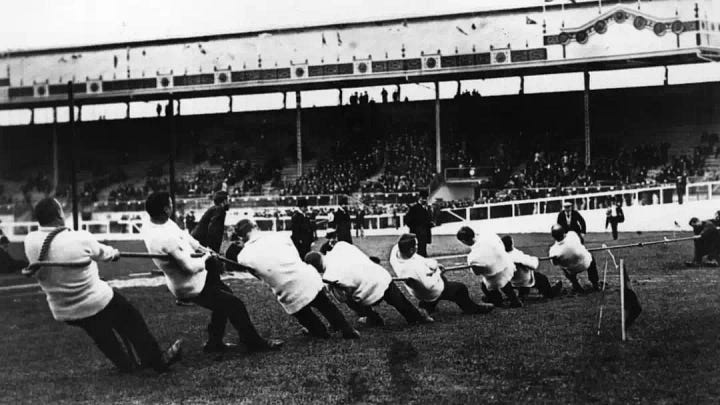
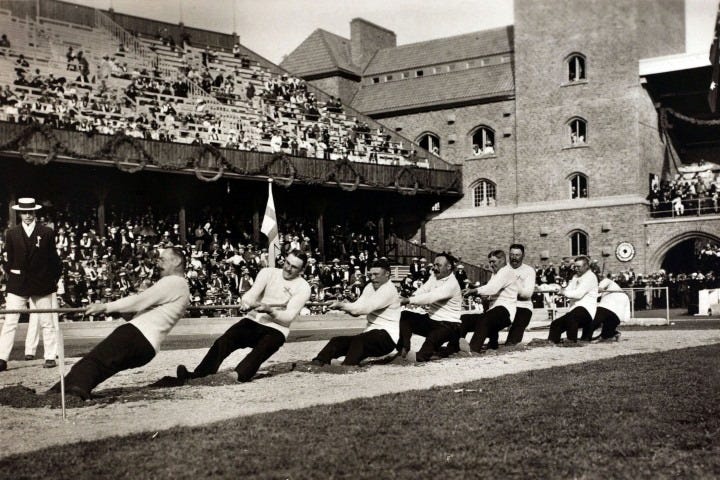
So, presumably you already know what tug of war is. What you may not know is that in the early days of the Olympics, athletes typically represented sports clubs (like the New York Athletic Club or the Liverpool Police Department, somehow) rather than their whole countries. Another major difference compared to now is that early Olympians would sometimes dabble in a variety of sports rather than being super-specialized in one particular event. As a result, many Olympic tugs of war involved multiple teams from the same country competing against one another, and often those teams consisted of dudes who were mostly at the Olympics to do something else. Here are some things that have gone down:
Because tug of war teams were often made up of athletes from other sports, scheduling conflicts were a real problem. At the 1900 Olympics in Paris, a U.S. team had to withdraw because half of its pullers had come to France primarily to do hammer throw, and the hammer throwing event happened the same time as tug of war.
This laissez-faire approach to who-gets-to-be-on-a-team seems to have also led to some ragtag bands that would be unthinkable today, like when Swedish and Danish athletes formed a last-minute multinational team in 1900 and wound up taking the gold. One member of their crew was Edgar Aabye, a Danish journalist who was onsite covering the Games but got recruited to help tug after one of the OG pullers got injured.
The tug of war medalists at the 1908 Olympics in London were not just exclusively British but in fact exclusively British police departments: the City of London Police, the Metropolitan Police, and the Liverpool Police. Apparently an American team took issue with the Liverpool cops for apparently wearing “enormous shoes, so heavy in fact that it was only with great effort that they could lift their feet from the ground,” as quoted on the Tug of War Association website. The Liverpudlians claimed that these were just their normal cop shoes and the Americans were overruled.
Wikipedia gives no citation for this, but apparently at the 1912 Olympics in Stockholm, Sweden and Great Britain were competing for gold but found themselves in an extended stalemate. Then “a couple of the London men succumbed to exhaustion and sat on the ground, disqualifying them and giving the Swedes the victory.”
Plunge for Distance (1904)
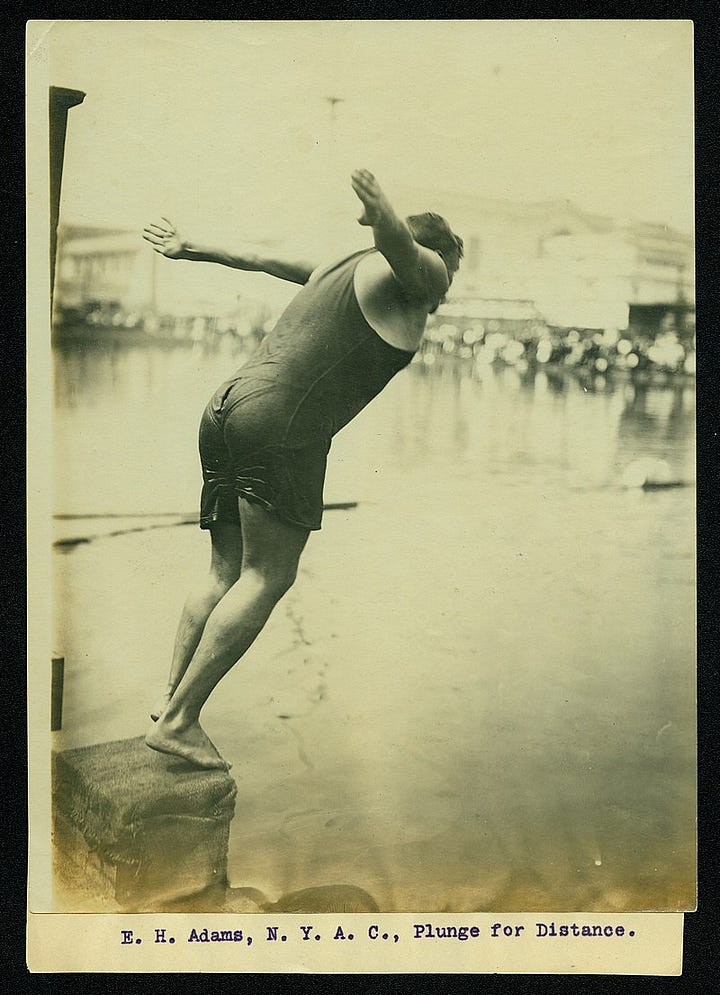

When you read the words “plunge for distance,” your brain might go “I have no idea what could possibly be happening here,” but when you read the sentence after this, you’ll be like “oh yeah, I guess this concept is accurately described by the term ‘plunge for distance.’” What happens is, you jump into the water from a foot and a half above the surface, then stay completely still for a full minute, and then you’re scored on how far you’ve managed to drift from where you started during that time. As you might imagine, people with larger bodies tended to do better at this event, because of how physics works, and I personally think this is great. Part of what makes the Olympics compelling is seeing what cool things different types of bodies can do, and I believe that it’s cool how heavier people go further in the water when they dive from a short height and then motionlessly lie face-down!
It seems like the various Sports Authorities (not to be confused with defunct store Sports Authority, which has been bought out by DICK’s Sporting Goods and seemingly never went on the record about PFD) did not agree with me about the merits of plunging for distance. Due to trivial concerns like it being not-at-all athletic and also it being boring to watch, it only appeared at one Olympics and was phased out of the NCAA in the 1920s. At the sole Olympic plunge for distance competition in 1904, Americans took home all three medals, which is actually not very impressive given that the only other two people competing were also American.
If you would like to see plunge for distance in action, here is a video of some modern British guy doing it in front of a waterslide for some reason.
Running Deer (1908-1924, then 1952-1956)

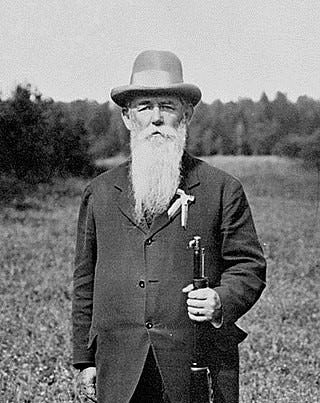
Running…deer? Yes, running deer. They had a fake deer made out of wood mounted on a little cart that would move on a railroad track, and then the athletes were supposed to shoot at it from 100 meters away, receiving points based on how badly their shots would have injured a non-wooden version of the deer (like, hitting the deer’s butt was not considered super valuable). During what one might call “Peak Running Deer Era” (i.e. the 1920 and 1924 Olympics in Antwerp and Paris) the Games featured a staggering four separate men’s running deer events, with versions for getting to shoot twice or just once and in teams or solo. I guess if you invest your country’s hard-earned francs in creating a faux-deer murder railroad it kind of makes sense to get as much use out of it as possible?
The Games’ most noteworthy running deerist (running darling?) seems to be Swedish marksman Oscar Swahn, who holds the record for oldest person to win an Olympic gold (aged 64 in 1912) and the oldest person to win any Olympic medal (a silver while aged 72 in 1920). Endearingly, he competed alongside his son Alfred “Alf” Swahn, who was also really good at running deer but is maybe less historically significant because he won all his medals before he turned 50 (booooooring, sorry Alf).






I absolutely need to see an Olympic tug of war event. I also approve the mix and match nationalities approach for this event! Seems like this could be a good step toward world peace.
I voted for tug of war with the proviso that they pull spectators out of the crowd, randomly assign them to teams and hand them "pinnies" to wear. "Everyone reach under your seat to see if you got one of the coveted pinnies and come on down!"